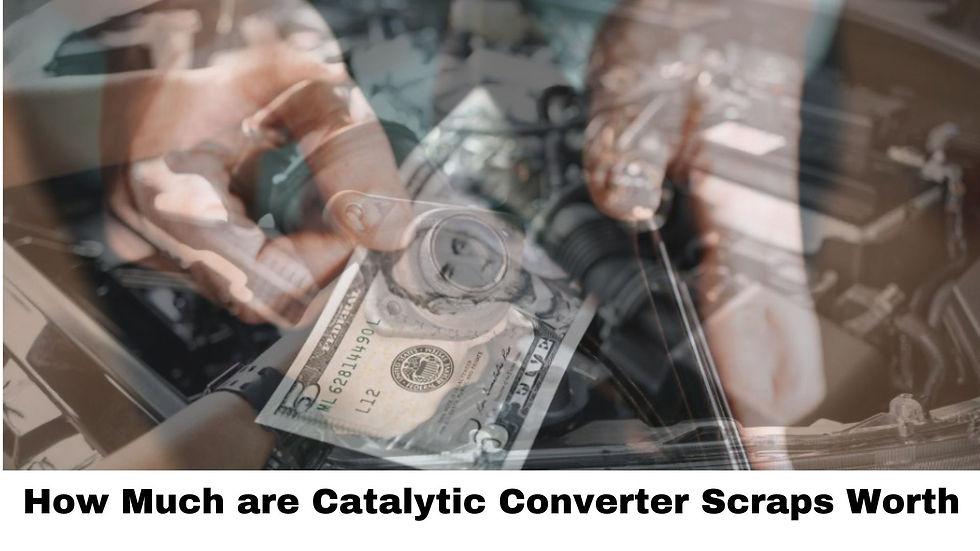How Much are Catalytic Converter Scraps Worth
- belanger converter
- Jun 23, 2022
- 3 min read

The same metals that help catalytic converters turn toxic auto emissions into relatively less dangerous gases make used converters valuable as scrap. The palladium, platinum, and rhodium catalysts may be present in small amounts but at $970 per ounce, you can afford to melt down several cores to extract the metal. The same is true of the other platinum group metals (PGMs) in converters – palladium and rhodium. And the converter core isn’t the only part worth money as scrap.
The Key to Catalytic Converters Cost
The most important single component of a catalyst is the honeycomb core where exhaust gases interact with a catalyst and get turned into relatively less dangerous gases. The catalytic function of the converter is thanks to the chemical action of those PGMs, usually just a few grams of them.
Given the market prices of rubidium, palladium, and platinum, it doesn’t take a huge collection of old converters to have some valuable scrap metal on hand. Consider some recent prices for each metal(from Metals Daily):
Rhodium - $15,500 per ounce
Palladium -- $1,969 to $2,096 per ounce
Platinum -- $948 to $976 per ounce
How many converters might you need to recycle to end up with an ounce of PGMs? Well, consider that 28 grams make an ounce and most converters have 6 to 16 grams of platinum, palladium, and rhodium in them with rhodium being one or two grams of the total. The amounts vary by model, but it is realistic to get an ounce of platinum from five or six converters and an ounce of rhodium from 28 converter cores.
What Makes PGMs So Valuable
The key to their effectiveness lies in platinum group metals (PGMs) that promote/catalyze reactions that turn toxic exhaust gases into CO2 and water vapor with traces of other things. The converters aren’t 100% effective but they do make cars run much much cleaner. Rhodium, one of the rarest metals, catalyzes a reaction that reduces nitrogen oxide emissions. Their ability to catalyze the chemical reactions that make car exhaust much less noxious makes PGMs valuable. Their rarity adds to their value as well – rhodium is the most valuable metal in the world while palladium and platinum are not exactly common. Combine being rare with performing an extremely valuable emissions control function and you can kind of understand how an ounce of platinum is worth almost as much as an ounce of gold.
Beyond PGMs
The catalysts inside are the main source of recycling value, but there is more. The oxygen sensors ahead of and behind the converter also contain PGMs. As with the catalytic converter, the type and amount vary. The older sensors contained a bit more of the precious metals. Additionally, the metal housing is potentially worth a little bit of money, being made of steel. Still, most of the value comes from extracting those PGMs from the converter and selling them.
Old Catalytic Converters Are Worth Recycling
The catalytic converter in your car works due to some of the unusual chemical properties of palladium, platinum, and rhodium. Because these metals clean the exhaust produced by your car’s internal combustion engine and are quite rare, they are valuable. The 6 to 16 grams of PGMs make converters valuable scrap items. At Belanger we want to help businesses turn those PGMs into cash, so we launched our Group Catalyst app to help with pricing. The app is available for Android and iOS devices from the respective app stores. Go download our app and use it to get a catalytic converter price in seconds. We can hedge the precious metals in your converters or de-can them for you.




Comments